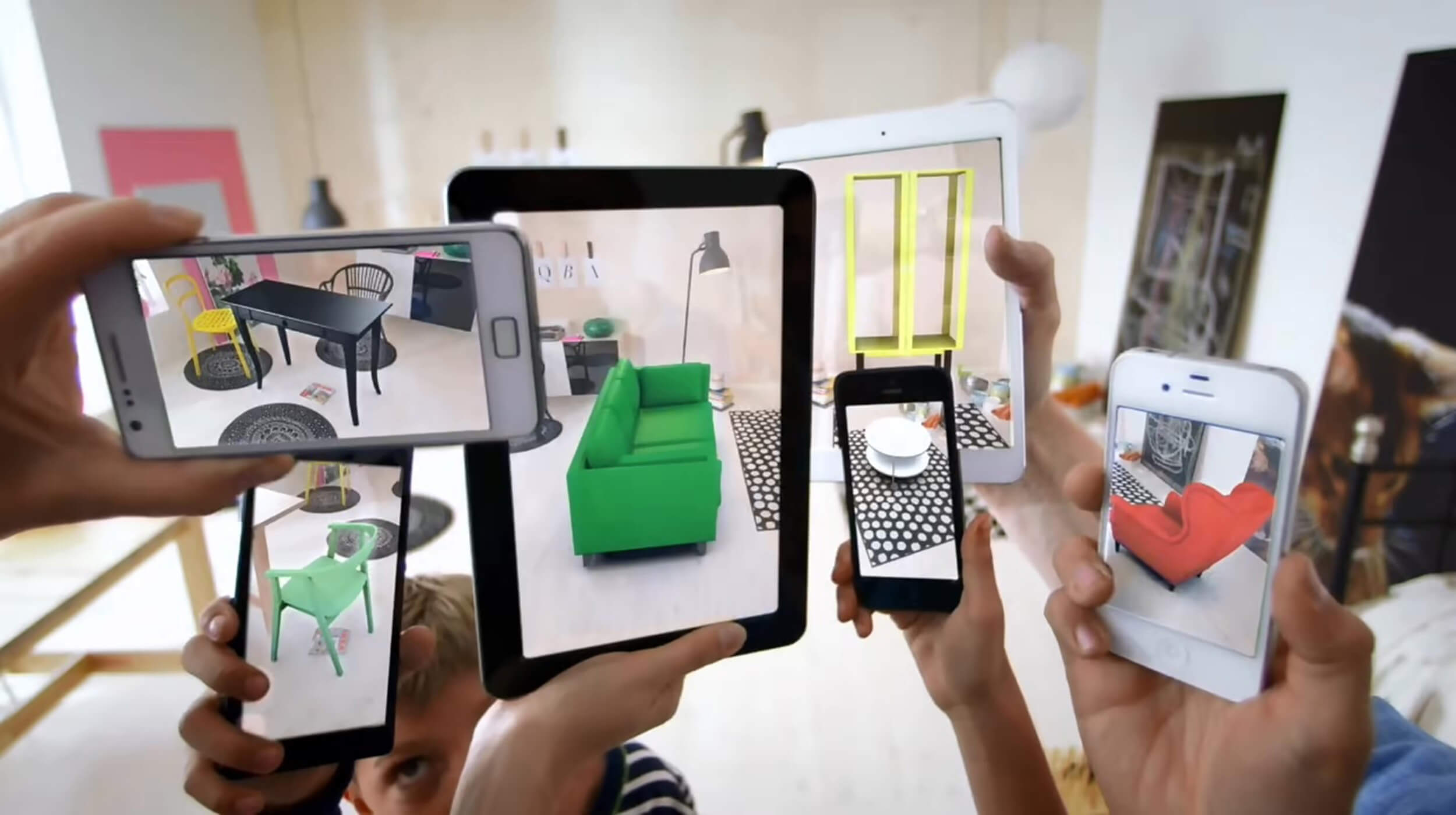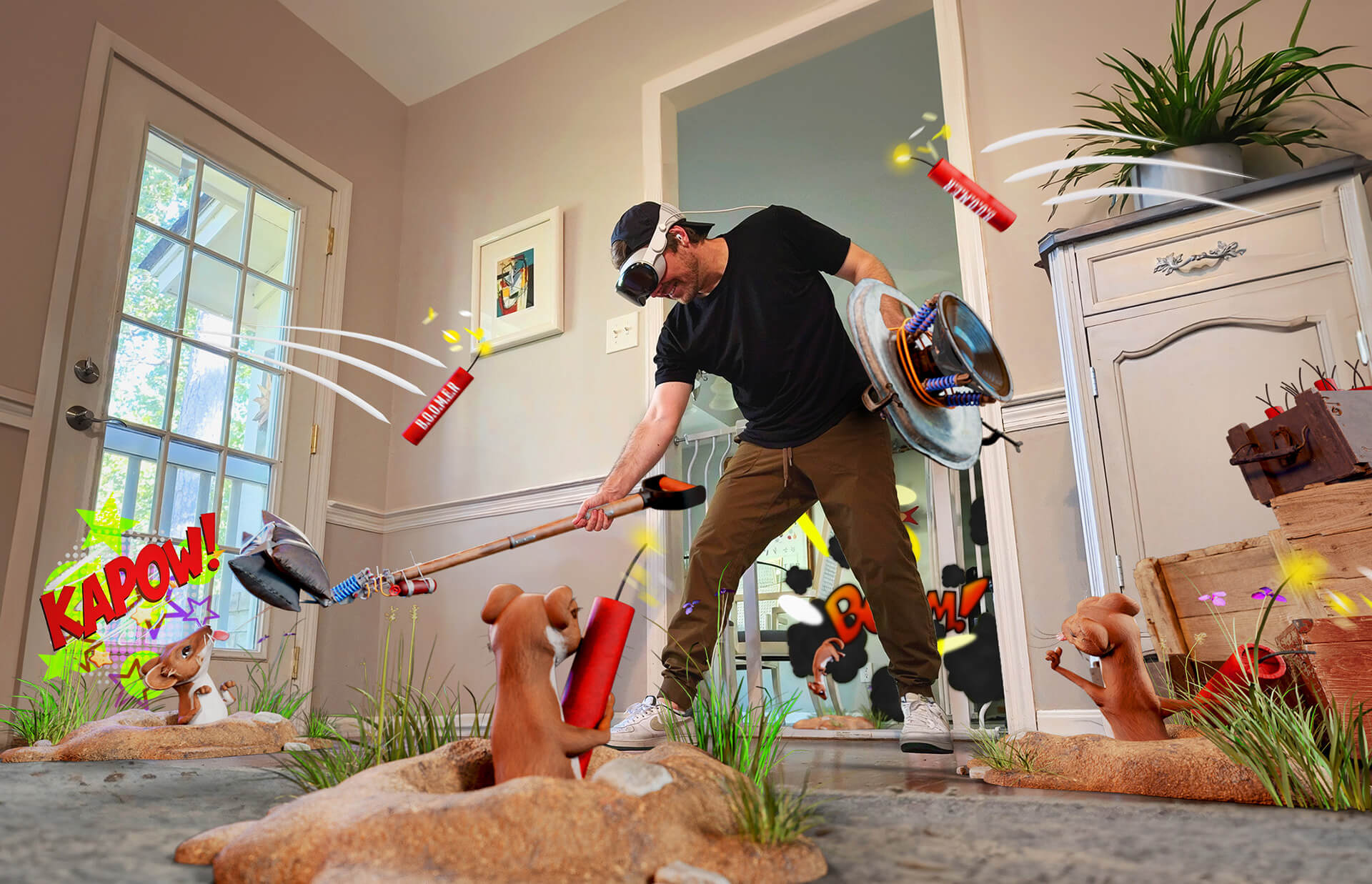Augmented Reality is going to be a game changer for both eCommerce and brick and mortar businesses alike.
For example, AR product visualization is great for more expensive items like furniture and cars where there is a requirement for boosting consumer confidence and reducing returns. But as of today with AR commerce, conversion rates are incredibly high while reach is still small but growing.

The consumer journey from visualization to other conversion milestones is a full-funnel medium that will continue to attract more consumer brands and we expect AR retail to explode over the next few years.
As a corollary to advertising, Artillery projects $12.7 billion in products to be purchased through AR interfaces by 2023 (not counted as “AR revenue”)*. This will also drive affiliate revenue for AR ad-tech startups to the tune of $404 million by 2023.
But one challenge eCommerce and brick and mortar are facing is the scalability of 3D content. 3D asset creation at scale is often a challenge for many companies. It can be expensive, time-consuming, and not super scalable. This is why RPR has developed optimized processes such as photogrammetry and proprietary 3D modeling techniques that help companies scale their 3D modeling initiatives.
Keep up to date
Sign up to our newsletter for exclusive updates and content, delivered directly to your inbox.
Below are 5 simple ways Augmented Reality can improve the consumer shopping experience and drive more sales.
AR Clothing Shopping
Want to try on clothes in the comfort of your own home? Or want to see if your size is in stock, how it’ll fit in-store before trying it on, or have it shipped directly to your home? RPR developed a custom AR fashion experience in collaboration with Mastercard and Saks Fifth Avenue that allows users to try photorealistic clothes onto a digital mannequin both in-store and at home. The experience drives consumer engagement and improves buyer confidence by allowing users to understand the fit and flow of fabric on a 1-to-1 scale.
Let’s chat
Not sure where to start? Book a free strategy call with us to get started! No strings attached.

AR Furniture Shopping
Houzz is using product visualization with great success. Houzz says product visualization boosts conversions by 11x and consumer spend levels by almost 3x. This is a major value-add to Houzz’s bottom line and exactly why we have developed applications that allows users to drop at-scale furniture in your home or office before you buy it. This allows users to stage home furniture to see how it all fits together and helps consumers feel more confident with their purchase decisions.
AR In-store Navigation
Ever get lost in the mall? Wonder where your favorite store is or just looking for a specific item? With indoor navigation technology and your own personal AR concierge, you can receive their own custom map and mall experience based on the stores you want to visit.
AR Grocery Shopping
AR can help you make better choices at the grocery store. Scan a label and see all the ingredients for a recipe, wine pairings, where to find the item in the store and whether it’s in stock. Set a weight loss goals and let your AR assistant analyze what you buy and what you eat to keep you on track.
AR Visual Search (Street Buys)
Visual search, a la Google Lens, identifies objects using the smartphone camera or AR glasses. As an ad medium, visual search engines such as Google will see strong performance and premiums due to high consumer intent (just like core search). For example, with visual search you can pass by a backpack or jacket you like, scan it with your phone, and instantly see the brand, reviews, and where to buy.
For more information on how RPR can improve your retail business experience with AR, Contact Us today for a free consultation and demo.
Look forward to hearing from you and happy shopping!
